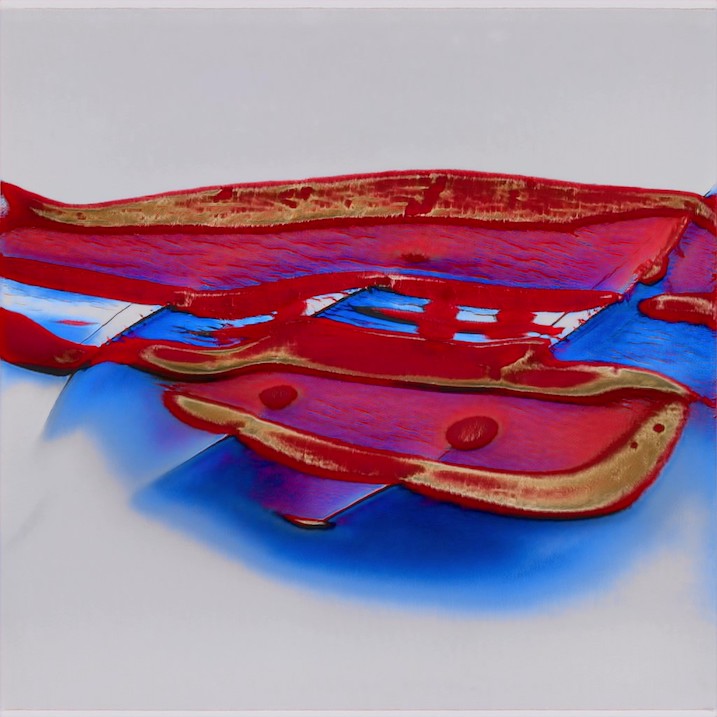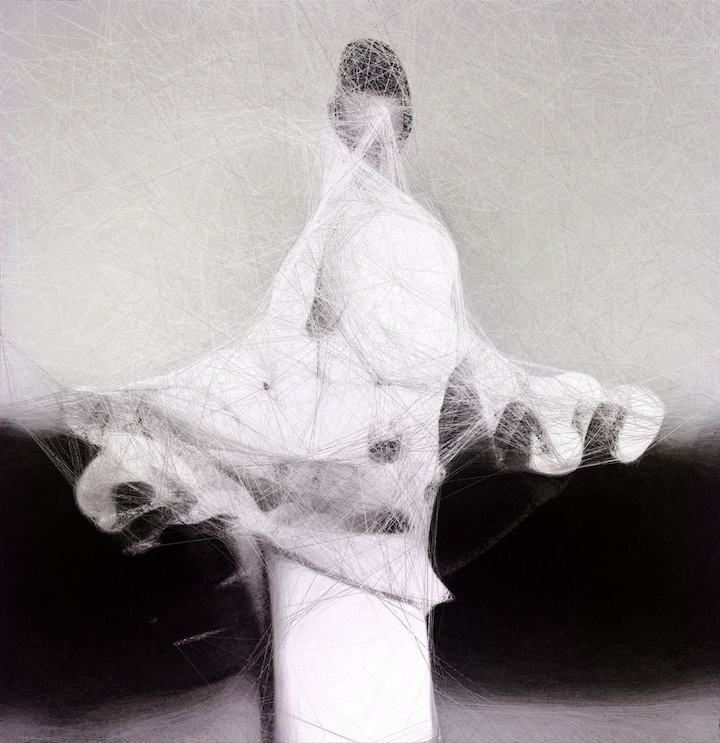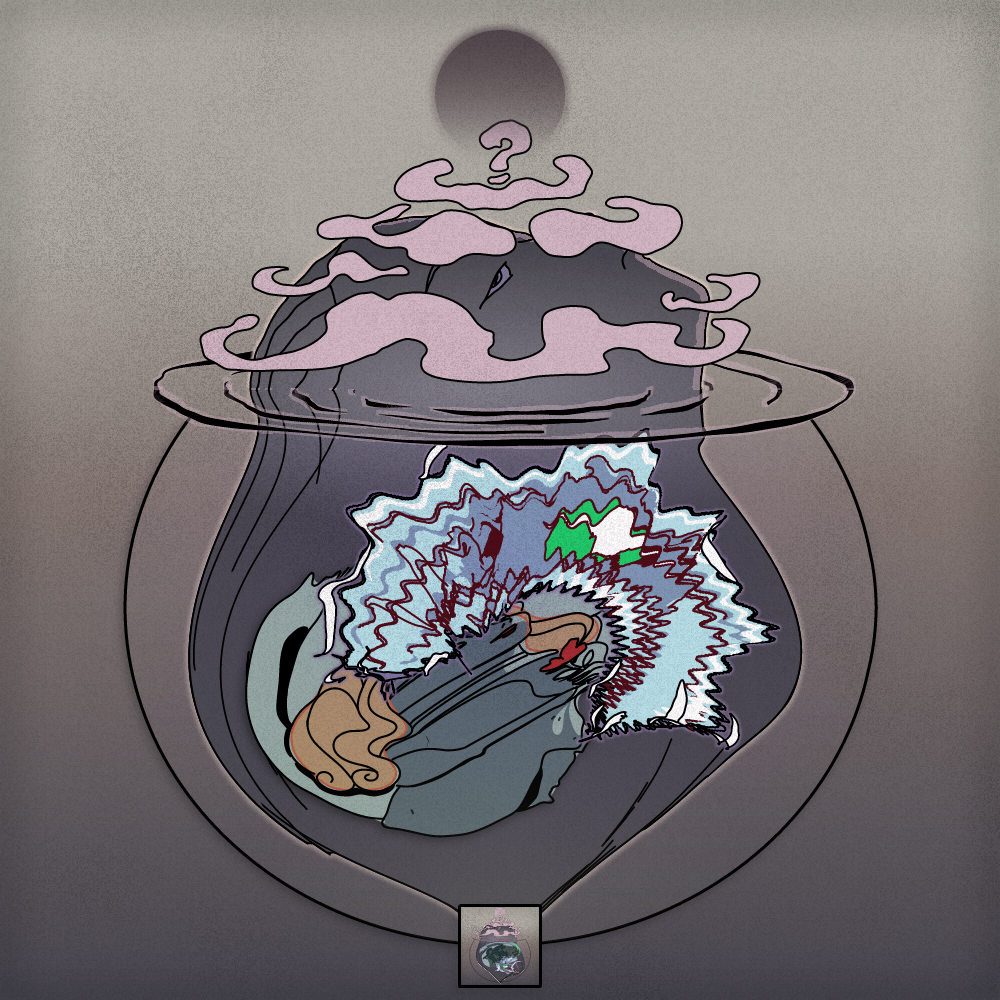Generative art proves Web3’s creative anchor in the traditional art world. Last month, New York’s Museum of Modern Art (MoMA) made headlines by acquiring Refik Anadol’s “Unsupervised – Machine Hallucinations” (2022) alongside an edition of last year’s “3FACE” project by Ian Cheng. These two mark the first-ever artificial intelligence (AI) and non-fungible token (NFT) additions to the MoMA collection, which already includes such relics as Andy Warhol’s soup cans and Vincent Van Gogh’s “Starry Night.”
The historic acquisitions also complement MoMA’s longstanding legacy of groundbreaking exhibitions at the intersection of technology and art, from the 1968 exhibition “The Machine as Seen at the End of the Mechanical Age” to “Signals: How Video Transformed the World” from this year.
MoMA’s announcement came along with an overview of the institute’s digital arts programming for the upcoming fall and winter seasons, including the debut of video artist Leslie Thornton’s latest work, “HANDMADE” (2023), and an online exhibition with Feral File which will open early next year. year. Weeks earlier, MoMA had also announced its on-chain Postcard project.

Sample data visualization,unsupervised: machine hallucinations. Source: MoMA
“These new initiatives underscore MoMA’s long-standing commitment to supporting artists who experiment with emerging technologies to expand their visual vocabulary and creative exploration, amplify the impact of their work, and help us drive transformative change in the world understand and navigate through them,” according to the museum’s press release surrounding their acquisitions.
“I’m very proud to be there,” Cheng told Cointelegraph. “MoMA had acquired my ‘Emissaries’ trilogy of simulations in 2017. Their openness and enthusiasm for acquiring dynamic digital art is rare for an institution.”
Uncontrolled
It is the screensaver heard around the world. Whether you’re charmed or leery of the prolific and mesmerizing machine-learning abstractions of this one-time Google artist-in-residence, chances are you’ve seen them. Anadol specially designed this with help from Nvidia. It feeds 138,151 pieces of visual metadata from the MoMA collection to an algorithm that produces an AI representation of art history through Anadol’s signature undulations.
Since its release in November 2022, “Unsupervised” has been reviewed by critics from Vulture, Artforum and more. The time it took to write those reviews says more than anything about the significance of the work. Jerry Saltz’s half-baked hot takes don’t diminish the mental energy his writing requires. Haters alone didn’t make Anadol famous; he has dozens of devoted fans, if not collectors. MoMA chose to expand the 7-meter-tall exhibition of the work several times. It just came out on October 29, but attendees who punched their proof of attendance protocol, or POAP, from the posted QR code still have a piece of the spectacle.

Sample data visualization,unsupervised: machine hallucinations. Source: MoMA
Renowned NFT collector and founder of the club 1 OF 1 Ryan Zurrer made the purchase of the work possible, together with the “RFC Collection”, led by Pablo Rodriguez-Fraile and Desiree Casoni.
“I tip my hat to the people at MoMA for understanding the cultural zeitgeist of this moment,” Zurrer told ARTnews. “Unsupervised went up two weeks before ChatGPT went public. AI is the defining topic of the moment, and MoMA has captured that. I am pleased to donate this work to MoMA. But I have to acknowledge that this isn’t just a donation from me and [collector] Pablo Rodriguez-Fraile, but from Refik. He brings the servers and screens and the other components. The NFT is part of this conceptual artwork that now belongs to MoMA.”
Magazine: I worked in VR for a week. But most of all it was terrible…
While the museum couldn’t clarify whether Anadol directly donated the hardware used to view “Unsupervised,” we can assume that is the case. Their release stated that Thornton’s “HANDMADE” will be on display in the same Gund Lobby where they showed “Unsupervised” on a screen of the exact same size, “designed by and realized courtesy of Refik Anadol Studio.”
3FACE
Meanwhile, Cheng avoids branding. A lifelong exploration of psychology through cutting-edge technologies defines his practice more than any aesthetic. In fact, 4,096 unique editions of “3FACE” exist, and not one of them was explicitly designed by Cheng’s hand. The works in the generative project show adaptive, continuous visual portraits of their owners, created using data retrieved from their wallets at a certain point in time. MoMA calls it his “most ambitious experimental artwork to date to explore blockchain technologies and the decentralization of data,” which builds on “the artist’s interest in people’s ability to relate to change.”
In his efforts to represent and shape the ephemeral mind, Cheng told Right Click Save last year that he believes “art can play a role in improving the unconscious response we have to complexity.” “3FACE” honors the depths of every person – and, because it is dynamic, their capacity to change.

Image from 3FACE. Source: MoMA
The NFT platform Outland Art donated its “3FACE” to the MoMA collection. “Jason Li and Chris Lew provided a lot of advice and helped shape the team to make the idea a reality,” Cheng told Cointelegraph. “Without Outland I wouldn’t have made ‘3FACE’.”
The work’s public listing on MoMA’s website does not indicate which issue of the entire series it is or which wallet it belongs to. MoMA did not respond to Cointelegraph’s request for comment, but based on the way “3FACE” works and the fact that MoMA has just started collecting on-chain artwork, this could be the “3FACE” interpretation of a wide open wallet populated only by Anadol’s “Uncontrolled.”
A new chapter in art history
Passing the torch from previously controversial and groundbreaking art forms like photography, generative art has forced this generation of artists to reassess what exactly makes art valuable.
“The endgame of generative AI tooling is a new immediacy between thought and visual articulation,” Cheng mused about the future for AI art. “We are used to the immediacy between thoughts and written or verbal expression. A writer can construct a novel without intervention. Imagine if you could make a movie without any intervention. As in writing fiction, the filmmaker is limited only by his own imagination, his taste, the quality of his questions, his courage to pursue gray truths and his understanding of human behavior.”
Technology will continually evolve, but it is the evolution of artists’ ability to use it that will separate what is merely eye-catching and what has impact. Not that the two are mutually exclusive. Even though MoMA’s acquisition of Anadol looks like an institution buying itself a Louis Vuitton bag, what society calls luxury is history in itself.
Recent: No CZ, no problem: Binance Blockchain Week showcases the Turkish crypto industry
Anadol and Cheng both work primarily with data when creating AI art. The emergent properties of their processes have implications. “Unguarded” begs the question: What is art history? – a charged topic that traditional art historians discuss without even breaking through the art of painting alone. Taking its premise, ‘3FACE’ asks those concerned with it how they would quantify a gnarled human psyche. It is one of the few projects that uses the ledger as more than a means of transacting.
Museums like the Los Angeles County Museum of Art and the Center Pompidou started collecting NFTs in their heyday. MoMA’s decision to grant such works credibility now marks a new turning point.
“We are turning our noses at ‘AI art’ now because the first experiments look like experiments, but will zoom out in ten years,” says Cheng. “The ease of producing visually refined expression will unlock a lot of artistic agency for a greater number of people, and that’s a good thing.”

